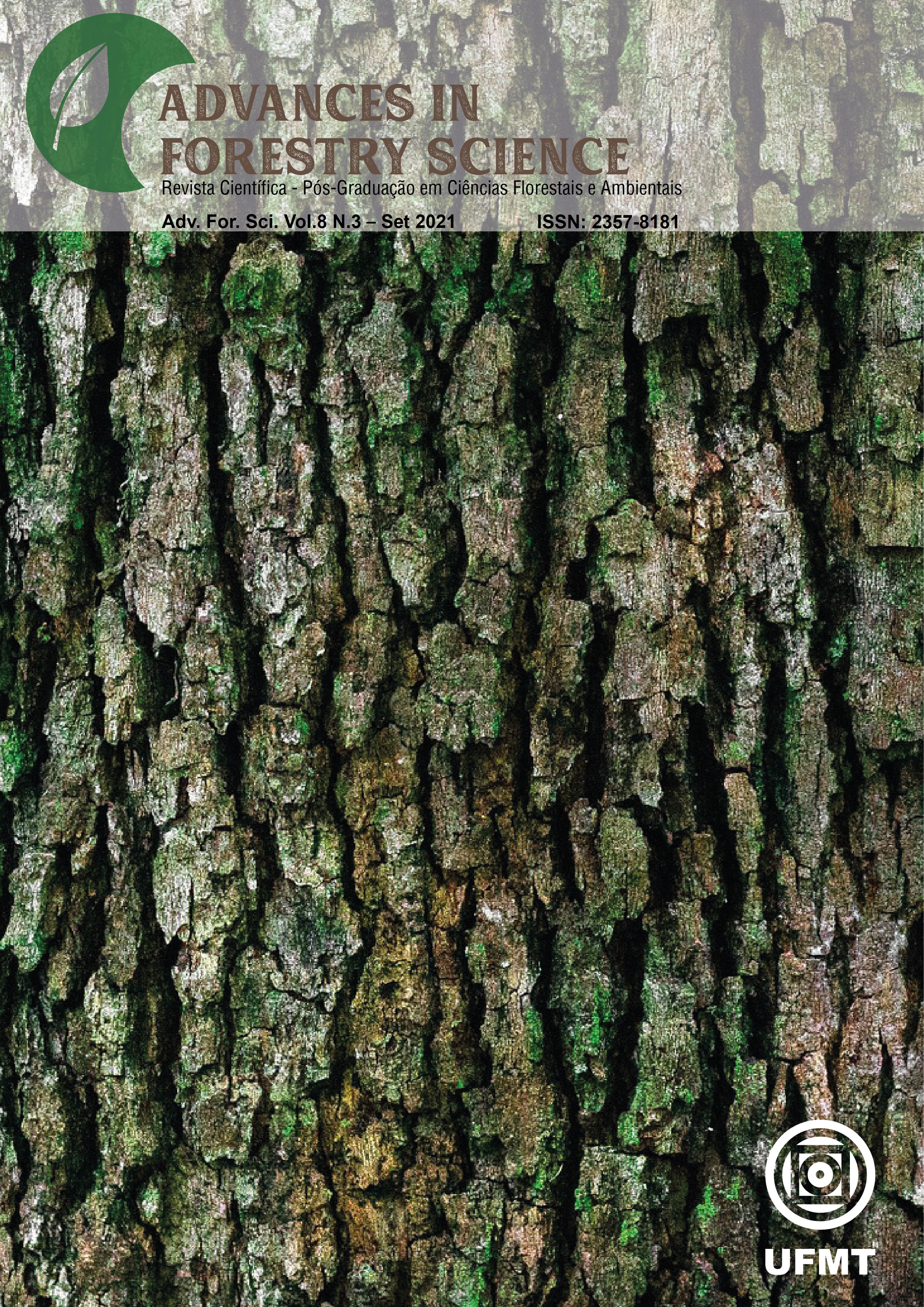Development of the cultivar xaraés under different concentrations of teak sawdust
DOI:
https://doi.org/10.34062/afs.v8i3.11496Abstract
Tectona grandis L.f. (Teak) is a highly cultivated forest species in Brazil. When industrially processed, it generates a large amount of sawdust, a waste that has limited reuse and accumulates in the industrial yards. The aim of this study was to evaluate the effect of fresh teakwood sawdust on the development of Urochloa brizantha (Hochst. ex A.Rich.) R.D.Webster cv. Xaraés in a nursery. The treatments consisted of concentrations of 0, 5, 10, 20, 33 and 50% of sawdust, arranged in four randomized blocks in split-plots. At 45, 75 and 120 days, plant heigh (h), average tillers diameter (d), number of live (nll) and dead leaves per plant, fresh and dry mass of shoots and roots, and Dickson's quality index (dqi) were measured. There was a decrease in h growth, d, nll, fresh and dry mass of shoots and roots and in the dqi of the cv. Xaraés as it increased to concentration of wood sawdust in the substrate. This negative effect can be attributed to the high C/N ratio of sawdust (196/1), which influences the decomposition of organic matter. In addition, the possible Teak allelopathic effects, which are the subject of other studies, should be considered. Unlike the other variables, number of live leaves was not influenced by the treatment with 5% sawdust. Teakwood sawdust has negative effects on the U. brizantha cv. Xaraés development.
Downloads
Downloads
Published
Issue
Section
License
All copyright must be assigned to the Federal University of Mato Grosso.

